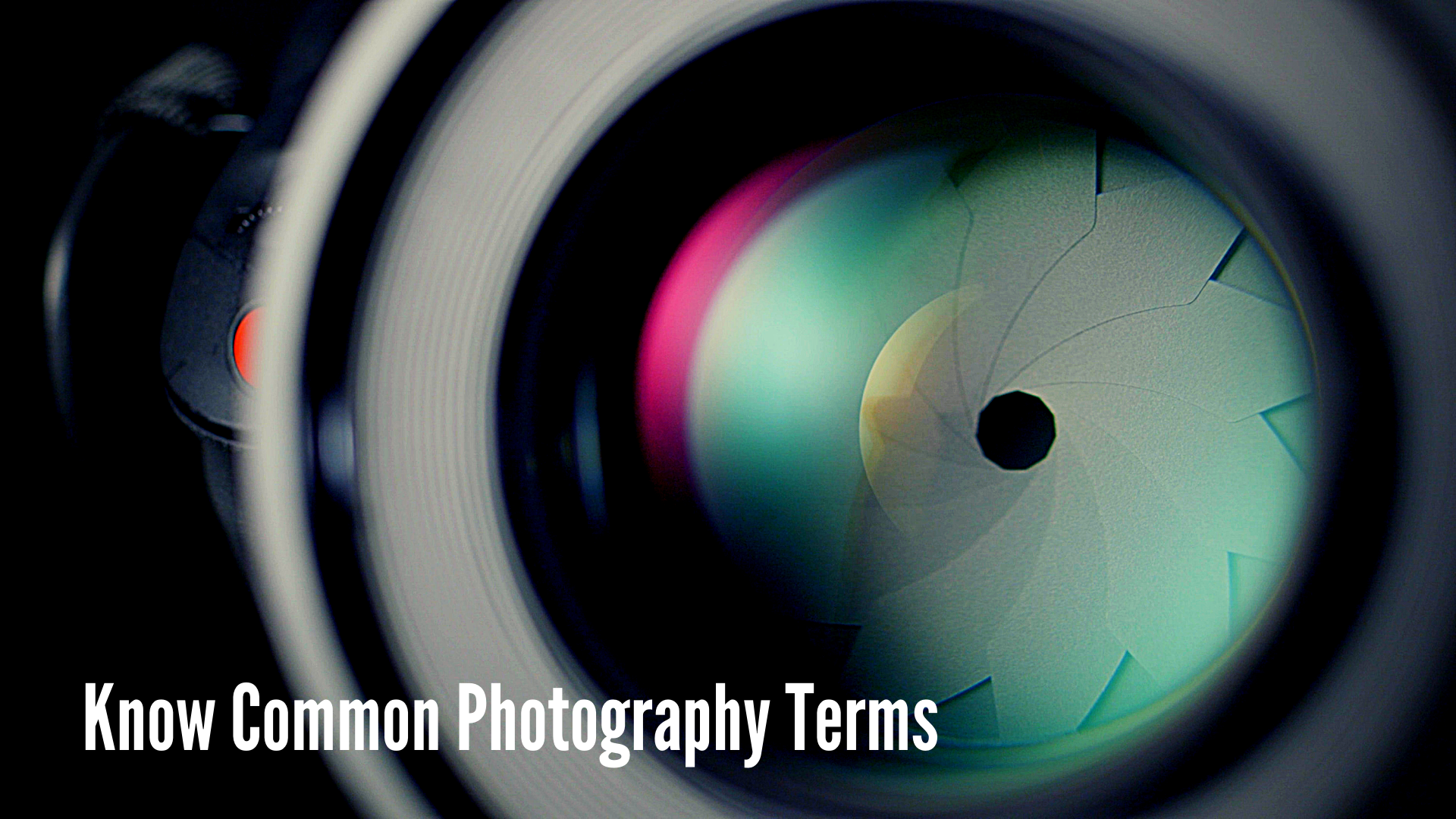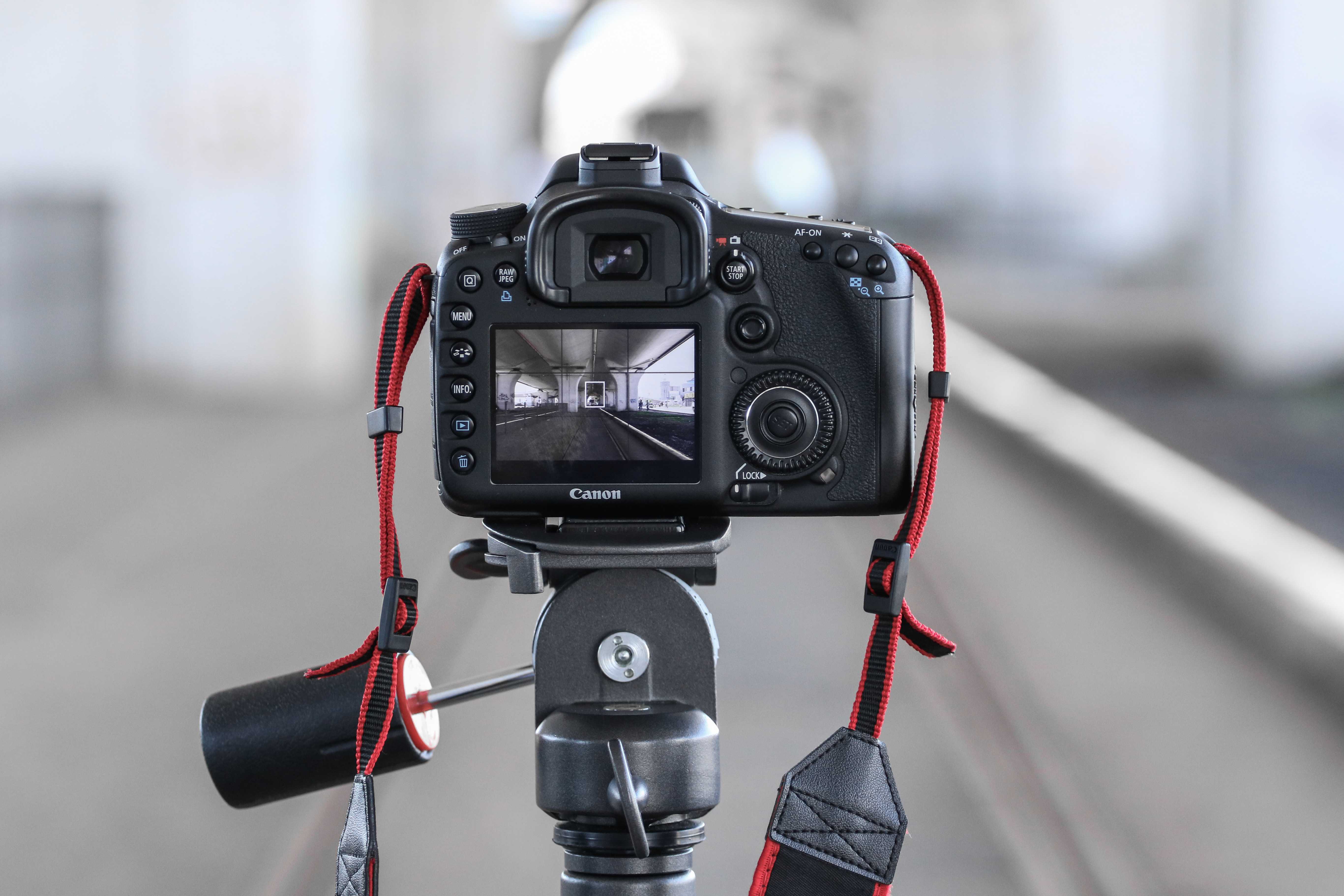Hello Guys, Today In this article I’m going to share 65+ Most common Photography Terms for you to remember.
These days Photography is a very trending topic, and every single person wants to capture something amazing and cool with their gears.
No matter if it’s a smartphone, DSLR camera, or any expensive Mirrorless or Action Camera.
Also If you’ve noticed these days every single smartphone contains a good amount of Mega Pixels and better image quality.
the reason behind this trick is that every single one loves to capture beautiful shots with their smartphones.
If you’re a selfie lover then this article does not belong to you.
but if you love to shoot a manual with your smartphone or use any DSLR or handy camera then this is the article which you need to read.
Read this article to learn some common photography terms, which definatly helps you to improve your knowledge related to photography.
In this article, I’m sharing some common and intresting Photography terms which are told by so-called expert photographers.
So now without talking more about this, let’s get started…
Common Photography Terms | Every Stupid Photographer Needs To Know
in this article, I’m sharing more than 65+ common photography terms, each and every photography term contains in-depth article resources.
hope you guys like it, if I miss any common photography word and if you know it then please comment below and let me know 🙂
DSLR Camera
so the basic meaning of DSLR is Digital Single Lens Reflex Camera.
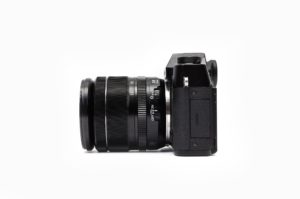
a camera which you can use to attach different lenses without any problem.
it also comes with a viewfinder which helps the user to see what the lens sees.
- What is a DSLR camera | Understand In-depth
- Know the difference between a DSLR camera And a Mirrorless camera
Exposure Compensation
Exposure compensation helps you to change the exposure set by your camera.
you can find this icon which is used to change the exposure.

you can use this setting to make your image look overexpose ( brighter ) or underexpose ( darker ).
Burst Mode
basically, it’s a synonym of continuous shooting mode.
many photographers use this mode while capturing any fast-moving object.
for example, you can use burst mode while performing sports photography or if you’re capturing any moving car or bird.
you can find this mode mostly on every single smartphone nowadays.
Focal Length
the basic meaning of focal length is here…
The distance between the optical center of the lens, it usually represented in millimeters (mm).
each lens contains some focal length.
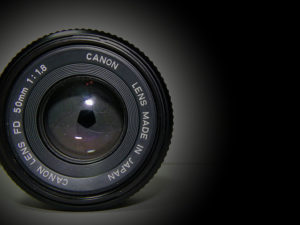
this canon prime lens contains a 50mm focal length.
just remember if the focal length is less like 10mm or 20mm then those types of lens are the wide-angle lenses.
and if the focal length is like 210 or 300mm then these types of lens are zoom lenses.
Histogram
If you’re using any popular editing tool then you’ll find a graph like this one…
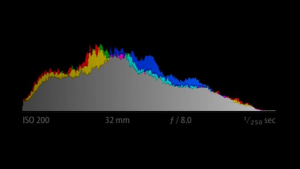
nowadays many cameras show this type of graph which is called a histogram.
this graph helps you to see the light distribution in that particular image.
Exposure
here is the pure definition of exposure in photography…
basically, exposure is the amount of light source which reaches your camera sensors.
if you understand exposure properly then you can easily manage the bright and dark parts of your images.
F Stops
Basically, F stops is a camera setting that identifies an aperture.
there is a very different range of aperture available.
if your lens contains a maximum aperture like 1.4F then you’ll get a more blurry background and on F16 you’ll get everything in focus.
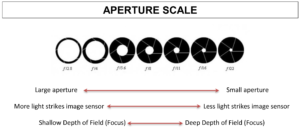
here F stands for Focal Length of the lens.
if you own a good camera then you can manage the aperture by yourself as per the requirement.
normally max aperture like 1.4 or 2 will helps you to get better images in low light conditions.
Lighting Ratio
according to Wiki: Lighting ratio in photography refers to the comparison of key light (the main source of light from which shadows fall) to the fill light (the light that fills in the shadow areas).
The higher the lighting ratio, the higher the contrast of the image; the lower the ratio, the lower the contrast.
Red Eye
Many people complain about the red-eye when they click images during nighttime by adding flash.
so when the photographer captures the image during night time using flash or any good source of light then that source of light is reflected from the retina.
and that makes that person’s eye red.
Panning Shot
It’s also called a pan shot.
here is the example of Panning Or Pan shot…

as you can see here is the photo that freezes the subject in motion which is called a panning or pan shot.
it’s one of my favorite types of photography.
Pixel
first of all, I’m not talking about the smartphone pixel 😀
according to wiki In digital imaging, a pixel or picture element is a physical point in a raster image or the smallest addressable element in an all points addressable display device.
so it is the smallest controllable element of a picture represented on the screen.
Image Blending
the basic meaning of image blending is mixing more than one image and converting all these images into a single image.
you can perform image blending using so many different applications and software.
professional people use Photoshop to perform image blending.
Aspect Ratio
when you capture any image it comes with some size, like landscape or portrait.
so the height and width of that image is the ratio.
aspect ratio defined by two numbers separated by a colon.
as you know square image comes with an aspect ratio of 1:1 and for Instagram, it’s 4:5 for a portrait image.
FPS
Basically, FPS means Frames per Sec.
Like many photographers want high frames per sec to capture every beautiful movement.
currently, I’m using Sony A6000 and it shoots 11 Frames per Sec, which is insane 😀
Mega Pixels
This term refers to the size of an image, usually in reference to a photo from a digital camera or camera phone.
A megapixel means one million pixels.
The resolution of digital cameras and camera phones is often measured in megapixels.
A high number of megapixels matters most when zooming in or cropping a photo.
If you guys like all these common photography terms then please share this article as much as you can, thank you 🙂
Dynamic range
Dynamic range in any photograph describes the ratio of two different types of lights.
where one light is maximum reflecting on the image and another one is minimum or less reflecting compare to first one, like black and white picture.
Moiré
it’s one type of pattern which comes into the picture when that object in the photo contains some details like line, dots, etc…
and those details that exceed sensor resolution
Flash & Flash Sync
according to wiki: In photography, flash synchronization or flash sync is the synchronizing the firing of a photographic flash with the opening of the shutter admitting light to photographic film or electronic image sensor.
shutter-speed
here is the simple answer of what shutter speed is…
it is the same amount of time/exposure that your camera records to capture one single image.
in short, when you press the button (called a shutter button) to capture an image and you use shutter speed for like 10 sec then your camera sensor freeze and shoot the next 10 sec.
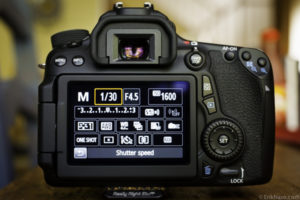
Strobe
if you’re familiar with flash photography then you must know about strobe.
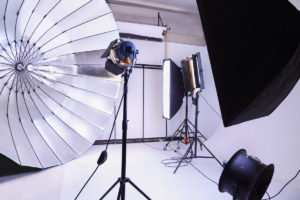
source: masterclass
Strobe helps you to produce regular flashes of light.
If you’re looking for good and powerful lights then you need to use strobes.
you’ll find strobe in every single photography studio.
Bracketing
The basic meaning of bracketing is that as a photographer you capture a single subject with different camera modes.
modes like aperture priority, shutter priority, manual mode, etc…
blue hour
Basically, it’s a time span before sunrise, which many photographers use to capture some good images…
it’s also a time span just after sunset when the sky changes from light to dark blue.
Image Stabilisation
if your hands are very shaky and you’re capturing images with slower shutter speed, let’s assume you’re capturing at 1/40th of a second then using image stabilization you can still capture a sharp image.
here is a simple example to understand image stabilization properly…
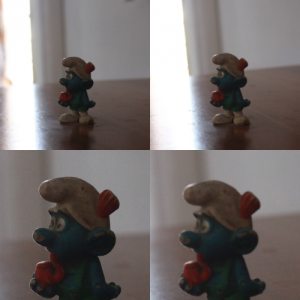
to capture these images I used a shutter speed of 1/60, and here is the result…
on the left side, I used a tripod and on the other side, I used my hands to capture the image.
Rule Of thirds
It’s one type of composition technique, which many photographers use to capture eye-catching images.
CMOS
It’s one type of sensor in a camera denoted as active pixel sensors.
here is the full form of CMOS: Complementary Metal–Oxide–Semiconductor.
This camera sensor is most commonly used in recent cameras.
Crop factor
It’s the ratio of the sensor size to 35mm / full-frame
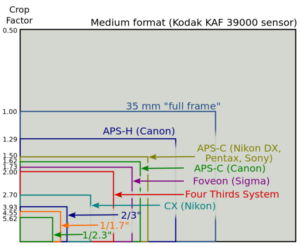
Candid
The basic meaning of Candid in photography is capturing some real movement of the subject.
I personally love to capture candid moments while shooting portraits, especially pre-wedding or wedding shoots.
ISO
So ISO means when your DSLR captures something at that time the sensor of your DSLR gets some lights.
so if your ISO is too high then the sensor gets a very good amount of lights in and when you decrease ISO then the sensor gets a fewer amount of lights.
here is the image captured with high ISO like 3200 or 6400.
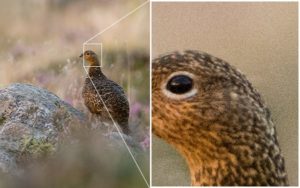
Photography
If you’re asking me then photography is an art, which everyone can create with their own unique style.
The basic Meaning Of photography is capturing some crazy moment that you can explore or see through your eyes.
White Balance
the basic meaning of white balance is the process of removing unrealistic colors.
If you’re using any DSLR or mirrorless camera then there are many different types of modes to set white balance are available.
more like…
- Auto
- this option sets everything automatically as per requirement.
- Tungsten
- Best for shooting indoors, also cool down the colors of image,
- Fluorescent
- Daylight/Sunny
- Cloudy
- warm real things up and add more warm colors than daylight.
- Flash
- you’ll find it warms up your shots a touch.
- Shade
- this mode will warm the real view up a little.
Golden hour
Is the time span of before sunset or after sunrise.
during these hours you’ll get very soft golden lights, which helps many photographers to capture better portraits and landscapes.
Time Lapse
Wiki says: Time–lapse photography is a technique whereby the frequency at which film frames are captured (the frame rate) is much more spread out than the frequency used to view the sequence. When played at normal speed, time appears to be moving faster and thus lapsing.
Macro
It’s basically one type of Close up photography, which many photographers use to capture insects and other small living creatures.
here is some examples of macro photography…
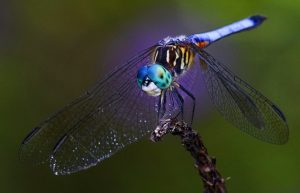

Image File Formats
there are so many diffrent types of file formats available when you shoot using your camera.
file format like NEF (RAW), JPEG, or TIFF formats.
each and every file format comes with some good and beds, By the way, I shoot RAW.
Mirrorless
It’s one type of camera, which works without a reflex mirror, which means the incoming light directly passes through the sensor to your display.
A Mirrorless camera is much lighter, quick, and costly compared to a DSLR camera.
Contrast
It’s the difference between light and dark in an image.
so let’s assume while editing If you increase the contrast then it’ll pop out bright highlights and dark shadow + bolder colors.
and if you decrease contrast then it’ll make your image flat/dull.
Nifty Fifty
It’s the common photography term used by every photographer for any cheap 50mm prime lenses.
which comes with a maximum aperture like 1.4 or 1.8.
Gobo
Wiki says: A gobo is an object placed inside or in front of a light source to control the shape of the emitted light and its shadow.
Exposure Triangle
It’s the combination of Exposure + shutter speed + ISO.
This one is a very useful photography term in our list of Common Photography Terms.
If you know these three terms then you’re ready to capture something amazing with your camera.
Metering Mode
Every camera contains a metering mode, this mode helps you to measure the correct shutter-speed and aperture.
to get the perfect brightness you need to choose the perfect metering mode, there are modes like…
- Evaluative
- Center-Weighted
- Spot
Photography Portfolio
It’s a collection of good images, which every photographer uses to show their clients.
No matter it’s a website or an Instagram feed (A website is better to share your portfolio with the client because you can show images that are handpicked by you only ).
Viewfinder
It’s one of the most important parts of any camera body.
which helps photographers to see what there are going to capture using their camera settings.
Vignetting
According to Wiki: In photography and optics, vignetting is a reduction of an image’s brightness or saturation toward the periphery compared to the image center.
The word vignette, from the same root as the vine, originally referred to a decorative border in a book.
this is the prime example of vignetting, hope you get the point.
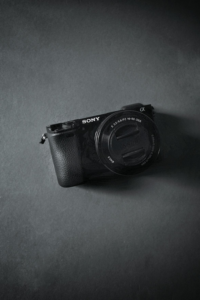
checkout each corner of the image which is dark and the middle part is bright which helps views to find your subject easily ( if your image is more attractive ).
Bulb
It’s one type of settings in photography available while capturing some long-exposure images.
normally DSLR camera comes with 30 sec of max shutter-speed for long exposure.
to expand this limit there is a setting called bulb mode, so using this mode you can capture more than 30 seconds.
there is no upper limit, once you release the shutter button it’ll stop automatically.
Another word for a Photographer
here is some unknown or another word for a photographer ( google suggested 🙂 )…
APS-C
It’s one type of camera sensor, full form of APS-C is Advanced Photo System type-C.
this sensor contains a size of 25.1×16.7 mm ( 3:2 ).
Crop Sensor
It’s a sensor that is smaller compare to a full-frame sensor or 35mm film frame.
This type of sensor is cropping out the edge of the frame to get the proper view ( 35mm ).
on the other hand, if you’re using a full-frame sensor then you’ll get a much wider view with the same lens.
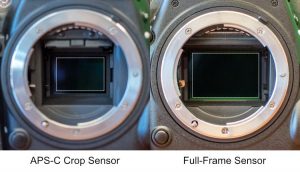
Noise
The noise comes in your picture if you’re shooting in low light with high ISO.
here is the image which I shared earlier while informing you about ISO…

Bokeh
It’s one type of soft and out-of-focus background ( not your subject ), which contains some good blurry fairy lights.
you’ll get these types of effects only if you’re shooting with a High aperture lens, apertures like F/1.4, F/2, or even F/2.8.
If you’re using a zoom or telephoto lens then with a high focal length, you’ll get these types of effects too…

Diaphragm
According to WIKI: The role of the diaphragm is to stop the passage of light, except for the light passing through the aperture.
Thus it is also called a stop (an aperture stop, if it limits the brightness of light reaching the focal plane, or a field stop or flare stop for other uses of diaphragms in lenses).
Lens Flare
Lens flare happens when the light from the sun hits your lens
many photographers use some application or software to create custom Lens Flare.
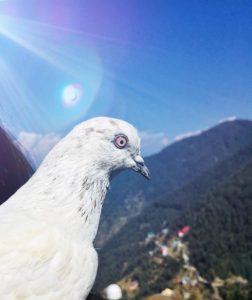
follow me On Instagram
HDR
So HDR stands for High dynamic range.
the word Dynamic range is the most important point to understand.
basically, HDR is a collection of three words.
we know the meaning of high and Dynamic but here Range!! The range for what ??.
so here Range for your image clarity.
the word Dynamic range is a ratio of light and dark in your photograph.
Manual Mode
A camera mode that helps you to manage all the camera settings by yourself.
using manual mode you can easily manage shutter-speed, ISO, aperture, image file type, FPS, and many more…
Lights
basically, there are two types of lights available when you’re talking about lighting in photography.
one is artificial and another one is natural.
the natural light source is the sun, artificial light source are bulb, LED, and many more ( made by humans )…
here are some more tricky but important & Common Photography Terms…
Depth Of Field
Depth of Field in photography means an image that contains a combination of a sharp object with a blurry background, and the bottom of the area which is sharp in focus. ( see the featured image )
that image which contains sharp area ( character: S, N, I, C, K, E ), too easy right ??, yeah !!
here is a simple example of Depth of field with a beautiful explanation.
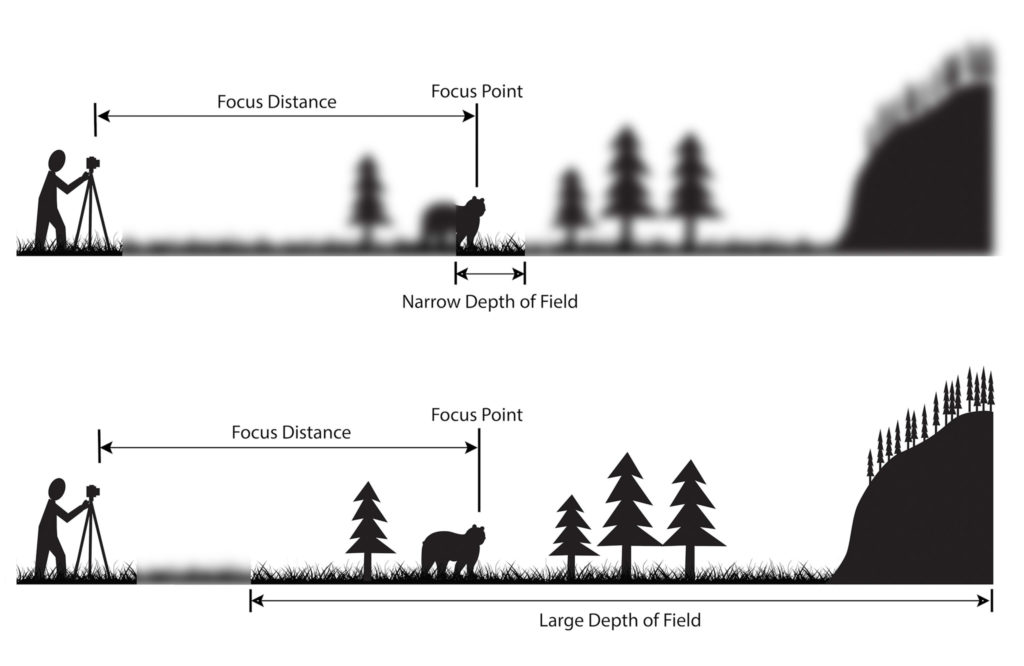
Credit: Photography life
see the focus point, we called it a “sharp area or object”.
Extension Tubs
It’s an additional tub that we can attach between your lens and camera to get sharp and closer shots.
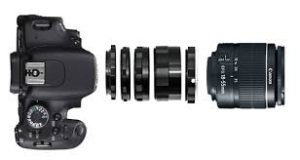
Focus
It’s the process of making some changes to the lens to make your subject look sharper.
you can choose manual focus or autofocus, to make your subject sharper and clear.
here are some more Common Photography Terms for you…
Circle Of Confusion
Wiki says: In optics, a circle of confusion is an optical spot caused by a cone of light rays from a lens not coming to a perfect focus when imaging a point source.
The smallest such spot that a lens can produce is often referred to as the circle of least confusion.
Distortion
It’s basically an optical aberration that converts straight lines (physically) and makes them appear curvy in your photograph.
Distortion is also called curvilinear.
Tonal range
Tonal Range is also called as Dynamic Range.
If you want to check out the colors and tones within your particular image, then the tonal range is very useful.
Exposure Compensation
According to WIKI: Exposure compensation is a technique for adjusting the exposure indicated by a photographic exposure meter, in consideration of factors that may cause the indicated exposure to result in a less-than-optimal image.
Conclusion
So these all are some useful and common photography terms or you can say photography words.
which you can hear when any professional or intermediate photographer talks.
now you know the real meaning of each and every common photography term so you can join them.
if I miss anything then please let me know 🙂
also learn things to know before you start a successful photography blog (15 ways), if you’re interested 🙂
that’s all from my side, thank you have a good day 😀

